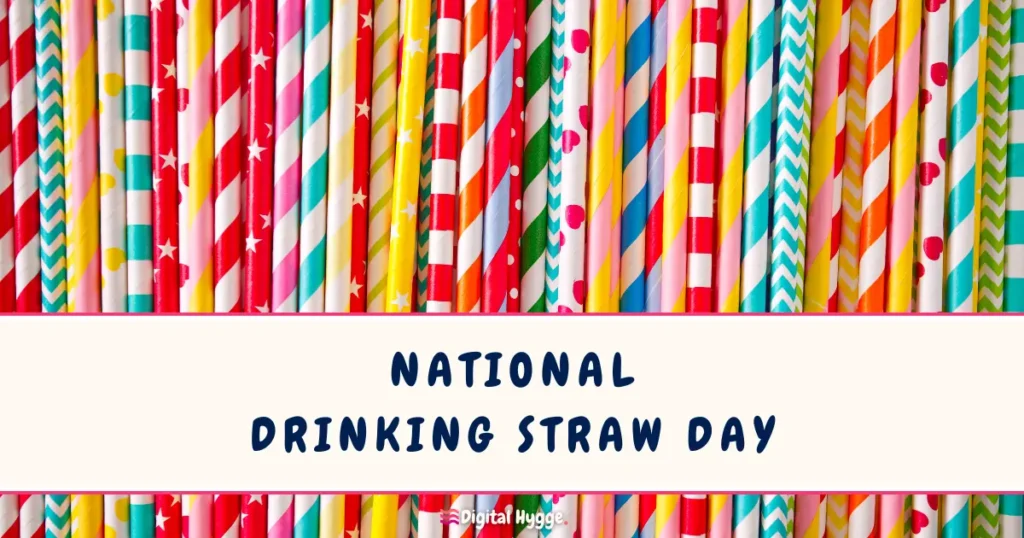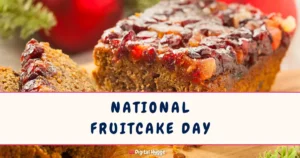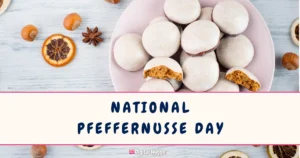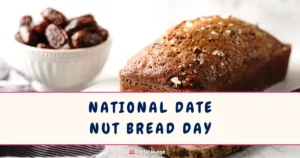National Drinking Straw Day, observed on January 3, commemorates the invention of the modern drinking straw and highlights its use in daily life. On this day in 1888, Marvin C. Stone patented the first paper drinking straw, which revolutionized the way people consumed beverages. Before Stone’s invention, straws were often made from natural materials like rye grass, which would often break down or affect the taste of the drink. Stone’s creation of the wax-coated paper straw provided a more durable and hygienic solution, and it paved the way for the widespread use of straws in homes, restaurants, and other settings.
As the 20th century progressed, plastic straws became the dominant choice due to their low cost and convenience. These plastic straws quickly became a staple in the food and beverage industry, found in everything from fast food chains to high-end restaurants. However, the convenience of plastic straws came with a significant environmental cost.
In recent years, there has been a growing awareness of the environmental impact of plastic straws, leading to a shift toward eco-friendly alternatives such as reusable metal, silicone, and biodegradable straws. National Drinking Straw Day serves as an opportunity to appreciate the convenience of this simple tool while also encouraging more sustainable choices for the future.
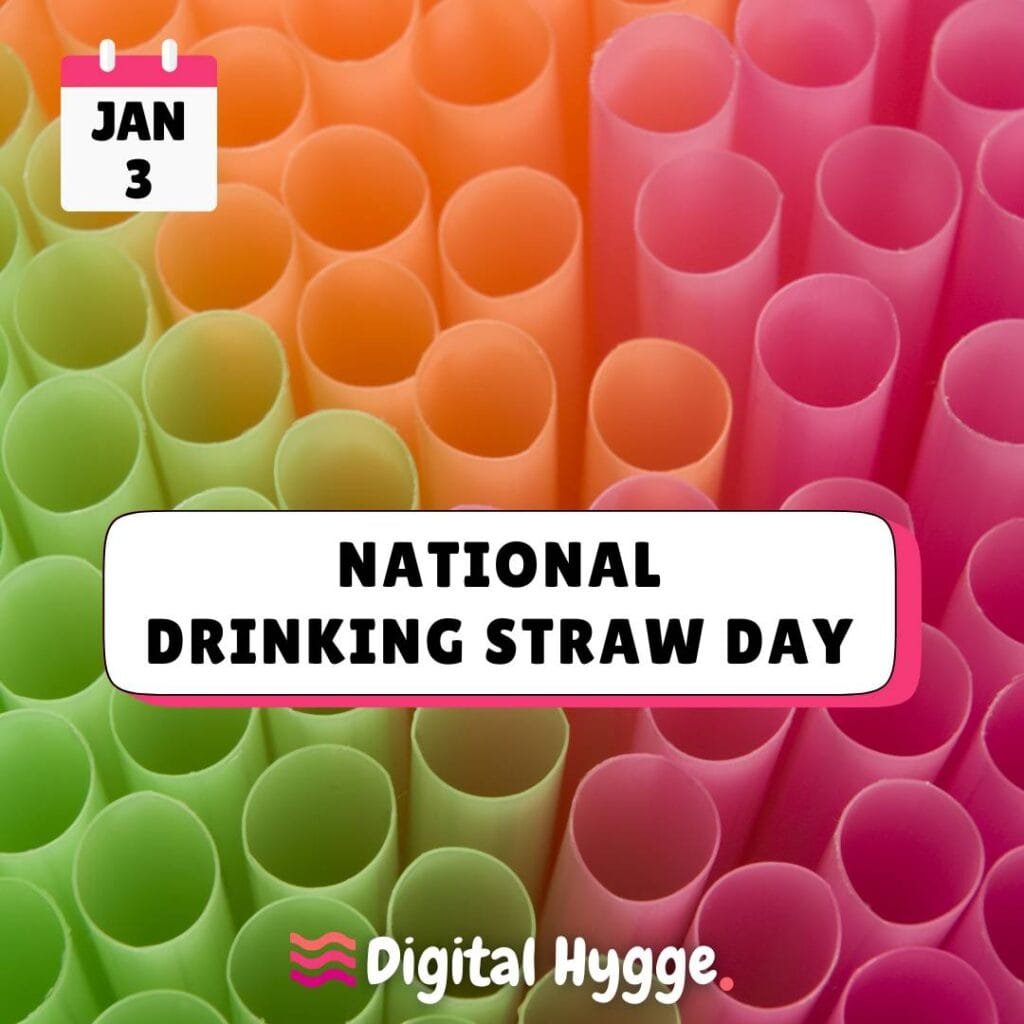
The History of Drinking Straws
✧ Late 20th Century and Beyond: As concerns about environmental sustainability grow, plastic straws begin to be phased out in favor of eco-friendly alternatives like reusable metal, silicone, and biodegradable straws.
✧ Over 5,000 years ago: Ancient Sumerians are believed to have used straws made from reeds and even gold to drink beer, helping avoid unwanted solids in their beverages.
✧ 1888: Marvin Stone invents the first modern paper straw, a wax-coated alternative to the natural rye grass straws that were commonly used at the time. His invention set the stage for the widespread adoption of straws in homes and restaurants.
✧ 1937: Joseph B. Friedman, inspired by his daughter’s struggle to drink a milkshake from a straight straw, invents the bendy straw. Using a screw and dental floss, Friedman corrugated one end of a paper straw to allow it to bend easily, making it more practical to drink from different angles. Initially, the bendy straw was marketed to hospitals to help patients drink while lying down, but it soon became a household staple, especially for children.
✧ Mid-20th Century: Plastic straws rise to prominence, replacing paper due to their durability and cost-effectiveness. Plastic straws become ubiquitous in fast food restaurants, diners, and homes, shaping the dining experience for decades.
Today, straws are still part of our daily lives, but with a growing shift toward eco-friendly options, there’s a lot more to their story than meets the eye.
When Is National Drinking Straw Day Celebrated?
If you’re planning to mark National Drinking Straw Day on your calendar, it takes place on January 3 each year. As the first holiday of the year focusing on environmental awareness, it’s an opportunity to reflect on small lifestyle changes that can make a huge difference in reducing waste. Here are the upcoming dates for National Drinking Straw Day:
| Year | Date |
|---|---|
| 2026 | January 3, Saturday |
| 2027 | January 3, Sunday |
| 2028 | January 3, Monday |
| 2029 | January 3, Wednesday |
| 2030 | January 3, Thursday |
Fun Facts About Drinking Straws
Drinking straws have a long history, from ancient civilizations to modern innovations. With surprising origins and even record-breaking designs, these simple tools have made a significant impact over time. Here are some intriguing facts that might change the way you think about straws.
- The longest drinking straw ever made stretched over 10 meters (33 feet) long. But could you drink from one? These guys tried to:
- Marvin Stone patented the first paper straw on January 3, 1888—hence the date for National Drinking Straw Day!
- In some cultures, such as Argentina and Uruguay, metal straws called “bombillas” are used for drinking yerba mate, a traditional tea.
- Americans use approximately 500 million plastic straws each day, contributing significantly to plastic waste.
These fun facts remind us of the drinking straw’s evolving role in our lives, from a practical tool to a cultural staple and, finally, a major player in the global sustainability movement.

Why Are Straws So Controversial Today?
In recent years, plastic straws have become a symbol of waste and environmental damage. While they’re just one small part of global pollution, their widespread use and the fact that they take hundreds of years to break down make them a key focus in sustainability efforts. National Drinking Straw Day serves as a reminder of the need for responsible consumption. Many cities and businesses are banning plastic straws in favor of biodegradable alternatives, like paper straws, which have received mixed reactions. Though better for the planet, paper straws often face criticism for their texture and tendency to break down quickly in drinks. This push for eco-conscious choices, however, continues to drive innovation as we seek to reduce plastic waste.
The Future of Straws: What’s Next?
National Drinking Straw Day also encourages us to think about the future of this simple tool. With innovations like edible straws, pasta straws, and even algae-based alternatives, the straw is undergoing a major transformation. As more people embrace sustainable alternatives, the traditional plastic straw may become a thing of the past. Keep an eye out for what’s next in this ever-evolving product—who knows what creative solutions will be introduced in the years to come?
By celebrating this day, you’re not only honoring a piece of everyday history but also playing a part in shaping its future.


